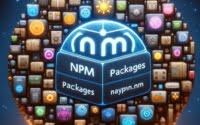Python Bytes to String Conversion Guide (With Examples)
Ever found yourself needing to convert bytes to a string in Python? In Python, bytes and strings are separate data types that often require conversion from one to the other. But what necessitates this conversion? How can we perform it efficiently? Fear not, this comprehensive guide is here to demystify this process for you.
In this guide, we aim to help you proficiently convert bytes to a string in Python. We will cover various methods and encoding methods for data type conversions.
Let’s dive in and decode this process together.
TL;DR: How do I convert bytes to a string in Python?
In Python, you can convert bytes to a string using the
decode()method. This method decodes the bytes object to produce a string. For instance,b'Hello, Python!'.decode()would return'Hello, Python!'. For more advanced methods, background, tips, and tricks, continue reading the rest of the article.
Example:
byte_object = b'Hello, Python!'
string_object = byte_object.decode()
print(string_object)
Table of Contents
Basics Conversions: Bytes to Strings
Let’s begin by explaining the process of converting bytes in Python. Here’s another example to illustrate the process of converting bytes to a string in Python:
byte_object = b'This is a fun Python exercise!'
string_object = byte_object.decode('utf-8') # specify the character encoding
print(string_object)
By executing this code, This is a fun Python exercise! will be printed on your console. This demonstrates how to convert bytes to a string in Python, using character encoding (‘utf-8’ in this case).
But what’s really happening here? The magic lies in the decode method. This built-in Python function is specifically engineered to convert bytes into a string. It operates by decoding the bytes using a designated encoding scheme, which by default is ‘utf-8’.
Different encoding schemes can influence the conversion process. For example, ‘utf-8’ can accommodate any Unicode character, making it a versatile choice for numerous scenarios. However, if your data is encoded with a different scheme, you’ll need to specify that scheme when invoking the
decodemethod.
| Encoding Scheme | Description | Use Case |
|---|---|---|
| ‘utf-8’ | Can accommodate any Unicode character. | Versatile choice for numerous scenarios. |
| ‘ascii’ | Only supports ASCII characters. | When data only contains ASCII characters. |
Example when decoding to ascii:
byte_object = b'Hello, Python!'
string_object = byte_object.decode('ascii')
print(string_object)
Debugging Tips: Python Conversions
Like any programming task, converting to a string from bytes in Python can sometimes lead to errors. However, understanding these common errors and how to troubleshoot them can save you a lot of time and frustration.
Unicode Decode Error
One of the most common errors you might encounter is UnicodeDecodeError. This typically occurs when you try to decode a bytes object using an encoding scheme that doesn’t support some of the characters in the object.
For instance, if you try to decode a bytes object containing a non-ASCII character using the ‘ascii’ encoding scheme, Python will raise a UnicodeDecodeError.
To manage this, you can specify an error handling scheme as a second argument to the decode method, such as ‘ignore’ or ‘replace’.
byte_object = b'Hello, Python!\x80'
string_object = byte_object.decode('ascii', 'ignore')
print(string_object)
Python Version Differences
Another effective troubleshooting tip is to be aware of your Python version. Different Python versions may handle bytes and strings differently, which can impact the conversion process.
For instance, in Python 2, strings are raw byte sequences, while in Python 3, they are Unicode sequences. This means that the same conversion code might work in Python 2 but raise an error in Python 3.
Here is an example showing how strings are handled in Python 2 vs Python 3:
# Example of Python 2 -> Python 3 difference
# In Python 2:
python2_string = 'Hello'
print(type(python2_string)) # would print: <type 'str'>
# In Python 3:
python3_string = 'Hello'
print(type(python3_string)) # would print: <class 'str'>
# In Python 2, a unicode string had to be specified with a 'u' prefix
python2_unicode = u'Hello'
print(type(python2_unicode)) # would print: <type 'unicode'>
# In Python 3, all strings are unicode by default, so the 'u' prefix isn't necessary.
# However, it's still supported for backward compatibility.
python3_unicode = u'Hello'
print(type(python3_unicode)) # would print: <class 'str'>
The output of these print statements are what they would be in the respective Python versions.
Other Data Types in Python
While our primary focus has been on bytes and strings, Python offers a rich set of data types capable of handling a wide array of data. Let’s briefly explore some of these other data types.
Python’s built-in data types encompass integers, floating-point numbers, complex numbers, strings, bytes, lists, tuples, sets, and dictionaries, among others.
Each of these data types is designed to handle a specific kind of data, and understanding their differences and applications can significantly enhance your Python programming skills.
integer_object = 10
float_object = 10.0
complex_object = 10 + 2j
list_object = [1, 2, 3]
tuple_object = (1, 2, 3)
set_object = {1, 2, 3}
dict_object = {'one': 1, 'two': 2, 'three': 3}
Summary of Data Types in Python:
| Data Type | Description | Use Case |
|---|---|---|
| Integer | Represents whole numbers. | When dealing with countable items. |
| Float | Represents real numbers. | When dealing with measurements or real-world quantities. |
| String | Represents a sequence of Unicode characters. | When dealing with text data. |
| Bytes | Represents a sequence of bytes. | When dealing with binary data or text data encoded into bytes. |
| List | Represents an ordered sequence of items. | When order matters and items can be changed. |
| Tuple | Represents an ordered sequence of items. | When order matters and items cannot be changed. |
| Set | Represents an unordered collection of unique items. | When order doesn’t matter and items cannot be duplicated. |
| Dictionary | Represents a collection of key-value pairs. | When data is associated with unique keys. |
Data Type Conversions
Just as we convert between strings and bytes, we can also convert between other data types in Python. For instance, we can transform an integer to a float, a list to a tuple, or a string to a list. These conversions can be performed using Python’s built-in functions, such as int(), float(), str(), list(), tuple(), and so on.
| Function | Input | Output |
|---|---|---|
int() | A number or a string (that can be converted into an integer). | An integer. |
float() | A number or a string (that can be converted into a float). | A float. |
str() | Any object. | A string. |
list() | An iterable. | A list. |
tuple() | An iterable. | A tuple. |
integer_object = 10
float_object = float(integer_object)
print(float_object)
The introduction of the bytes data type in Python 3 reflects the growing importance of data handling and communication in programming. As Python continues to evolve, we can expect its data types to become even more versatile and powerful.
Advanced String Processing
As you continue your Python journey, you’ll come across more advanced topics related to bytes or strings. For example, you may encounter concepts like bytearrays, mutable sequences of bytes, or Unicode normalization, a process that simplifies the comparison and processing of strings.
bytearray_object = bytearray(b'Hello, Python!')
bytearray_object[7] = 80
print(bytearray_object)
Third Party Libraries
Beyond Python’s built-in capabilities, there are numerous third-party libraries that can assist you in handling bytes and strings.
Libraries such as numpy and pandas offer robust data structures and functions for handling binary and text data, while libraries like chardet can help you detect your data’s encoding scheme.
import pandas as pd
data = pd.Series([b'Hello, Python!', 'Hello, Python!'])
print(data.str.decode('utf-8'))
Further Resources for Python
If you’re interested in learning more about appending to a string in Python and comparing strings, here are a few resources that you might find helpful:
- Exploring Python String Operations: A Step-by-Step Guide: Follow this step-by-step guide to master various string operations in Python, enhancing your ability to process and analyze textual data.
Tutorial on Appending to a String in Python: This tutorial by IOFlood demonstrates different approaches to appending to a string and covers techniques such as using the
+=operator and thestr.join()method.Guide on Using Python to Compare Strings: Methods and Tips: This IOFlood guide explores different methods and tips for comparing strings such as using comparison operators.
How to Convert Bytes to a String in Python: This GeeksforGeeks article provides multiple methods to convert bytes to a string in Python with detailed explanations and examples.
Python Bytes to String: How to Convert a Byte String: An article on freeCodeCamp that explains different ways to convert byte strings to strings in Python, including using the
decode()method and specifying the encoding.Python Convert Bytes to String: This tutorial on SparkByExamples demonstrates various techniques to convert byte objects to strings in Python.
These resources will provide you with detailed explanations and examples to understand how to append to a string and compare strings effectively in Python.
Wrap Up: Byte to String Conversions
We’ve demystified the process of converting bytes to a string in Python, starting with the fundamental use of the decode method, exploring diverse encoding schemes, and even troubleshooting common issues that can surface during the conversion process.
We’ve discovered that understanding your data, the encoding scheme, and error handling are all vital for successful conversion. We’ve also learned that the version of Python you’re using can influence the conversion process.
We also expanded our perspective to examine other data types in Python, and how understanding them can boost our Python programming skills. We realized how the choice of data type can influence the efficiency of our code, memory usage, and even the result of our code.
So continue exploring, continue learning, and continue unravelling the intricacies of Python!


